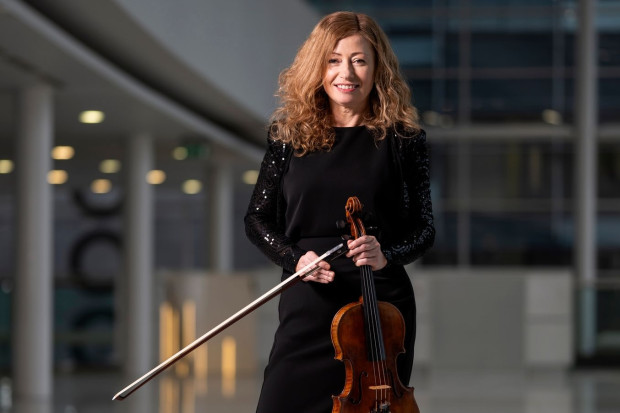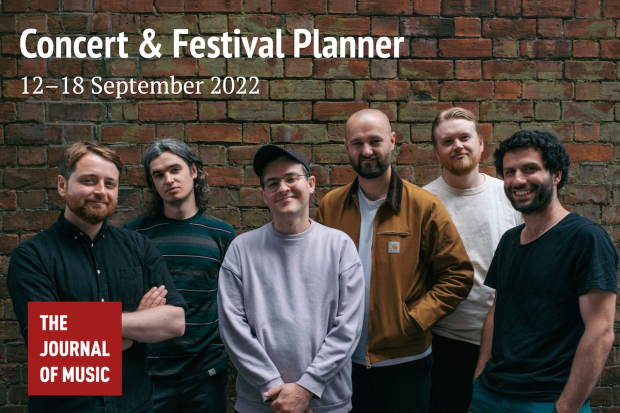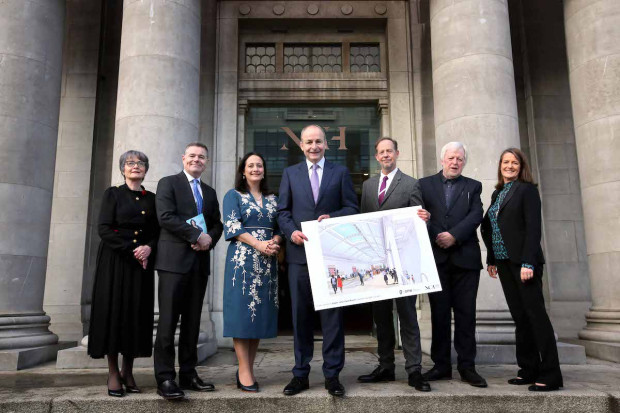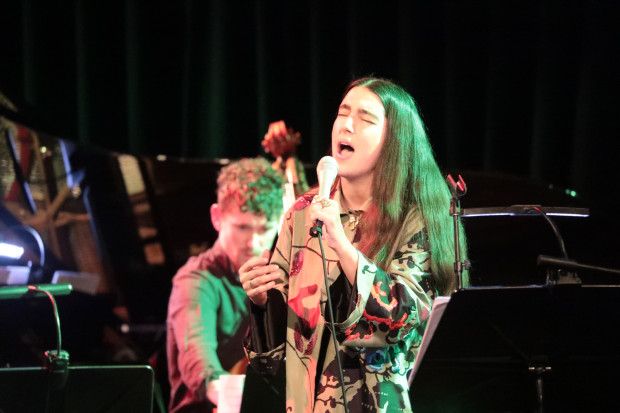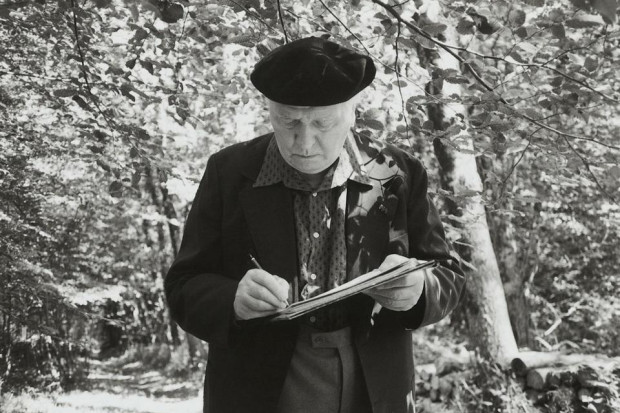
The New Irish Chamber Orchestra and Belfast soprano Irene Sandford in Beijing in 1980.
Marking an Important Decade in Irish Orchestral History
Irish classical music, and especially chamber music, might seem to some to be an art form for the elite, part of a cultured, upper-class upbringing and something therefore quite niche or inaccessible to the majority. Indeed, during the debate around RTÉ’s financial woes and the fate of its orchestras in 2017–2018, broadcaster Ivan Yates famously got into hot water when he claimed ‘it’s only for snobs anyway, this classical music…’
However one likes to think of it, it’s hard to underestimate the contribution that the New Irish Chamber Orchestra or ‘NICO’ made to the orchestral and musical landscape in Ireland in the 1970s during what was a turbulent time in social and trade union history. What we now know as the Irish Chamber Orchestra, which relocated to the University of Limerick in 1995, would not be here at all had it not been for those groundbreaking ten years. NICO also sowed the seeds of the Irish Baroque Orchestra, now in its twenty-fifth year, through Thérèse Timoney, the first violinist. The modern orchestral landscape of Irish classical music was to change forever through hard work, luck and some very serendipitous events.
Total disbelief
NICO was founded in 1970, the result of one of the ubiquitous strikes of the decade. This was a time of global inflation, high unemployment, high costs of living and high taxes. The result was a social uprising within trade unions to secure better working conditions and adequate pay for their members. Orchestras were no different, and most were members of the musicians’ union, the Irish Federation of Musicians and Associated Professions. Locked out of their rehearsal venue one February morning at St Francis Xavier Hall, Dublin, due to a technicians’ strike, the various members of the RTÉ Symphony Orchestra found themselves in confusion and disbelief. An entrepreneurial oboist in the orchestra, Lindsay Armstrong, felt the impulse to suggest that the group meet to rehearse somewhere else during the strike and out of this, by the suggestion of the principal flautist André Prieur, the New Irish Chamber Orchestra was born, and Armstrong became its manager – ‘I shall never forget the look on André’s face… total disbelief at first, turned into a beaming smile when the truth started to sink in… There was no going back. NICO was established.’
Armstrong’s memoir of this remarkable time is a fondly remembered, reverent, frank and humble account, and chronicles some critical developments in Irish musical history. His recollections interweave with the fabric of 1970s Ireland and in particular reference the beginnings of those who were to become seminal figures in Irish music, such as Sir James Galway (then known simply as Jimmy), Frank Patterson and John O’Conor.
The memoir takes the form of a diary and chronicles by date, venue, repertoire and soloists all of the concerts performed by NICO between 1970 and 1980 when Armstrong left to take up the position of General Manager at the National Concert Hall. The sheer amount of information in this book is impressive, not just because this vast amount of data has been collated into a concise and detailed history, but because of the intricate, nuanced and colourful way in which Armstrong recollects the tiniest minutiae of events, the most fondly remembered of which are clearly the human elements of his story.
Adventures
With devotion and fond memory, he recounts some genuinely laugh-out-loud moments from spending ten years touring with the orchestra, like the comical narrative around the adventures of the double-bass stool, which travels independently around Russia while NICO is on tour: ‘First thing that meets our eyes in the arrivals area is Herbert’s double-bass stool, covered in labels testifying to its journey all over Russia, but never quite catching up with us.’
Most of Armstrong’s recollections are ephemeral observations of character, anecdotes and travel recollections, remembered with astonishing clarity – evanescent and yet lasting a lifetime. Moments on stage, a glance or knowing look, under-breath mutterings, or the first-hand experience of a problematic solo are all recounted with nostalgic reminiscence, as Armstrong recalls his own agonising oboe obbligato during one of the Bach cantatas: ’…not even a recitative to snatch a brief respite. I don’t know how I got through, especially when my reed started slipping on the crook! It was the worst moment of my professional career… at the conclusion of the Cantata… Bill… didn’t even look at me!’
These human interactions, recounted with honesty, wit and fondness, triumph in this memoir, so as almost to render the monumental achievement of the orchestra in national and musical terms a mere trifle.
The most delightful part of this book, therefore, perhaps, is the celebratory tone which it takes, a tribute to the players whom he clearly admired and revered for their professionalism and technical abilities. This was a manager who was dedicated and passionate about the success of the orchestra and loved it. By the middle of the book, Armstrong has succeeded in imbuing the reader with a contagious zeal for the orchestra and his colleagues. It is always a joy to listen to someone who is passionate about what they do; it doesn’t matter what that is.
Repertoire and composers
Music emanates from the pages of this book, from the detailed descriptions of passages of music, concert performances, dazzling cadenzas and difficult obbligato passages, remembered with photographic accuracy; if you know the music he is talking about, you can positively hear it wafting out of the pages and hear the applause and standing ovations.
You can also hear how important their work was, both to them as professionals and friends but also to Irish music, especially as experienced abroad on the staggering amount of international tours they undertook and the equally distinguished recordings they have made.
Armstrong brings the reader along on this great adventure, always humble and without requiring any personal acclaim. Still, as we take this journey with the orchestra, it soon becomes apparent that the size of the repertoire they performed over these ten years is momentous. The book is equipped with a very informative appendix, which summarises, in case you lost count, the number of pieces performed, including 59 Bach cantatas, 19 Haydn symphonies and 21 Mozart piano concertos. That barely scratches the surface of the repertoire in total. Some of the most important musical projects undertaken were the annual Bach cantata series, directed by John Beckett, their collaboration with Sir James Galway, and no less than 19 international tours.
It is heartening also to see the list of Irish composers who were performed in places like France, Italy, Belgium, China and the USA, including but not limited to the likes of John Field, Seóirse Bodley, Brian Boydell, Arthur Duff and John F. Larchet. The profile of Irish orchestras abroad was cultivated and honed here under Armstrong’s management. It was to prepare the soil for many more international orchestral tours from the most recent incarnation of the Irish Chamber Orchestra.
Funding
As the reader zooms out once again to take in the enormity of these ten years, what is also apparent is how funding was so critical to operations. Significant funding didn’t come from the Arts Council until 1980. The Cultural Relations Committee seems to have been crucial in the dissemination of work abroad, something which cemented NICO’s standing on the international stage. We can perceptibly grasp the growth of the orchestra through Armstrong’s accounts: from touring the smaller corners of Ireland to their appearance for the pope in Rome in 1975, at Carnegie Hall in 1978 and the BBC Proms in 1979. All this done on the agreement that every member of the orchestra including its conductor got the same amount of pay, something inconceivable today.
It wasn’t until 1979 that the Arts Council enabled Armstrong to give up his full-time post at the RTÉ Symphony Orchestra to become full-time paid manager of NICO. This kind of cultural entrepreneurship ensured that the venture was a success; without this generosity of spirit, time, love and attention, one is sure it wouldn’t have progressed so stratospherically.
The stars must have aligned for NICO, the second iteration of the Irish Chamber Orchestra, the first having been under the baton of János Fürst between 1964 and 1966, lasting just three years, stymied by the then principal conductor of the RTÉ SO, Tibor Paul. This time it succeeded, under the baton of André Prieur, with Armstrong at the helm and the willing participation of some of Ireland’s best musicians, along with what was probably (and crucially) the goodwill and support of the RTÉ Symphony Orchestra (who employed most of the musicians as full-time members).
Armstrong’s memoir at first conjures up some kind of Chaucerian Canterbury Tale; it is anything but that. It’s humorous, fondly nostalgic and straightforward and makes a precious resource for research on the development of music in Ireland. The author concedes that this is a personal memoir and not a scholarly history and he concludes with a very fitting summary, the tone of which, I am sure any reader will agree, is eloquently communicated throughout the book, that this was ‘…a journey of faith, hope and love.’
The Manager’s Tale: New Irish Chamber Orchestra – 1970–1980 by Lindsay Armstrong is published by Somerville Press. To purchase the book, visit www.somervillepress.com/managers.html. Coinciding with its publication, a CD of the New Irish Chamber Orchestra has also been issued. For enquiries, email orchsc [at] eircom.net.
Published on 16 April 2020












